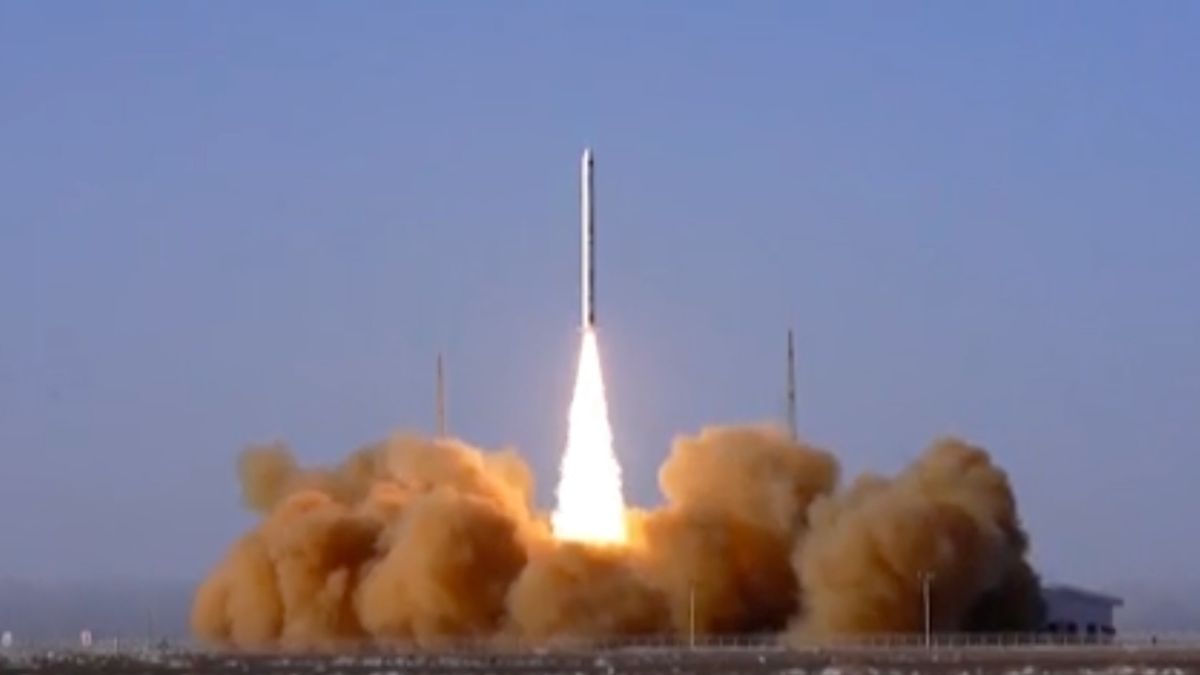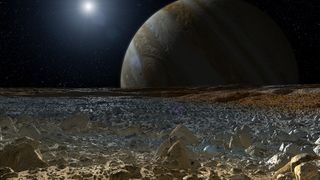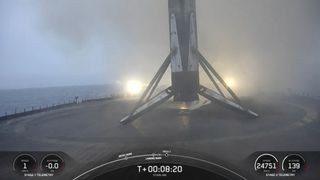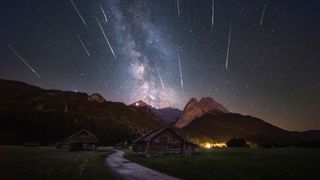Severe turbulence, record rainfall, killer heatwaves and raging wildfires to name but a few: is it just me, or is “Is Earth’s weather getting weirder?” The answer? Yes. Well, sort of. These weather events have happened in the past, but the problem is nowadays they’re happening more frequently and to a far greater extent. What’s causing this uptick in “global weirding” and is there anything we can do about it? Space.com spoke with a leading climate scientist Katharine Hayhoe to learn more about this strange surge in weird weather events…
Read MoreCategory: The Moon
Our moon
‘The Last Starfighter’ at 40: Director Nick Castle on making his sci-fi fantasy classic (exclusive)
“Greetings Starfighter, you have been recruited by the Star League to defend the frontier against Xur and the Ko-Dan armada. Get ready! Prepare for blast off!” The summer of 1984 was a banner year for Hollywood, with a bounty of A-list releases that included such iconic titles as “Ghostbusters,” “Gremlins,” “Star Trek III: The Search For Spock,” “Conan the Destroyer,” “Indiana Jones and the Temple of Doom,” “The Karate Kid,” “Purple Rain,” “Red Dawn,” “The Company of Wolves.” “The Neverending Story,” and “Revenge of the Nerds.” Added to that esteemed…
Read MoreThis Week In Space podcast: Episode 119 —Junkyard in Space
Junkyard in Space – The Dangers of Orbital Debris – YouTube Watch On On Episode 119 of This Week In Space, Rod Pyle and Tariq Malik talk with Dr. John Crassidis from the University of Buffalo about orbital debris and its dangers. If you saw the movie “Gravity,” you have a sense of the dangers of orbital debris—and the risk is very real. More than 25,000 objects over four inches in diameter are tracked by the US Space Force, and millions of others are smaller or untracked—everything from derelict satellites…
Read MoreChinese company iSpace suffers 4th launch failure in 7 tries
The Chinese company iSpace’s launch-success rate has dipped below 50% once again. iSpace’s seventh Hyperbola-1 rocket lifted off from the Jiuquan Satellite Launch Center in the Gobi Desert on Wednesday (July 10) at 7:40 p.m. EDT (2340 GMT; 7:40 a.m. on July 11 Beijing time), carrying an undisclosed payload toward Earth orbit. But the solid-fueled launcher didn’t make it. “The first, second and third stages of the rocket flew normally, but the fourth stage worked abnormally, and the launch mission failed,” iSpace wrote in an update on Wednesday night. (Translation…
Read MoreNASA’s $5 billion Europa Clipper mission may not be able to handle Jupiter’s radiation
A highly anticipated NASA astrobiology mission is troubleshooting a serious issue just months before its planned liftoff. The Europa Clipper spacecraft is scheduled to launch this October atop a SpaceX Falcon Heavy rocket. The robotic explorer will embark upon a $5 billion mission to assess the potential of Europa, an ice-covered ocean moon of Jupiter, to support life as we know it. But that launch date, and the probe’s ability to carry out its ambitious mission, may now be in peril: Mission team members have discovered a problem with Clipper’s…
Read MoreFAA investigating SpaceX Falcon 9 rocket anomaly
The U.S. Federal Aviation Administration (FAA) is requiring an investigation into the recent anomaly suffered by a SpaceX Falcon 9 rocket. The issue occurred on Thursday night (July 11), during the launch of 20 Starlink internet satellites from Vandenberg Space Force Base in California. The Falcon 9‘s upper-stage engine failed to complete its second burn as planned, and the spacecraft were deployed into a lower-than-intended orbit as a result, according to SpaceX. SpaceX is looking into the nature and cause of the anomaly, under the supervision of the FAA. “The…
Read MoreGalactic penguin honors the 2nd anniversary of James Webb Space Telescope’s 1st images
To celebrate two years since the James Webb Space Telescope (JWST) started sending images back to Earth, NASA has released yet another stunning image taken by the revolutionary space telescope. The second-anniversary JWST image shows two interacting galaxies that make up a single object called Arp 142, which appears like a cosmic penguin with its cosmic egg. Fittingly for a celebration of the JWST’s two years of science results, the new image is a two-for-two. Arp 142’s Penguin and Egg scene comprises two interacting galaxies located around 326 million light-years from…
Read More‘Drawn to our planet:’ How spaceflight changed SpaceX Inspiration4 astronaut Chris Sembroski
Inspiration4 was the world’s first all-civilian orbital mission, sending a four-person crew skyward atop a SpaceX Falcon 9 rocket. The privately funded commercial mission took place from Sept. 16 to Sept. 18, 2021. Inspiration4 used a SpaceX Crew Dragon spacecraft called “Resilience,” which was commanded by billionaire entrepreneur Jared Isaacman, the founder and CEO of Shift4 Payments. You should get familiar with that name, as he’s also leading the upcoming Polaris Dawn mission, the first effort in the three-flight Polaris program, which is funded and commanded by Isaacman. Isaacman booked…
Read MoreCosmic crime scene reveals ancient supernova aftermath of dead star merger
The ultimate cosmic “cold case” has lingered for 843 years — and now, space detectives may have solved it at last. In 1181 AD, as the Genpei War raged in Japan, a mystery “guest star” briefly flashed over Asia’s skies. Astronomers had puzzled over the brief event until 2021, when a team of researchers tracked it to its location in the cosmos. Yet, the cause of the event, now designated supernova (SN) 1181, remained shrouded in mystery. That was until a team of scientists used computer modeling and observational analysis…
Read MorePerseid meteor shower returns to our skies this month to kick off summer ‘shooting star’ season
Anyone gazing at the summer night sky for even a short length of time is likely to spot a few “shooting stars” darting across the sky. The best meteor display of the summer comes during the second week of August during the annual Perseid meteor shower which, at its peak around the nights of Aug. 11 and 12, is capable of producing 50 to 100 fast, bright meteors per hour for a single observer. Many flaring meteors with trains are seen under good skies. 2024 will be a very good…
Read More








